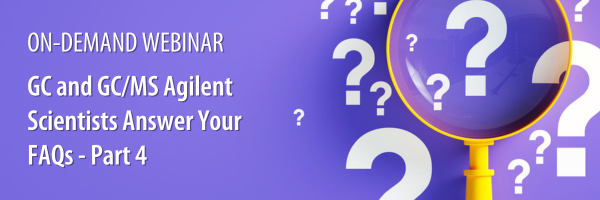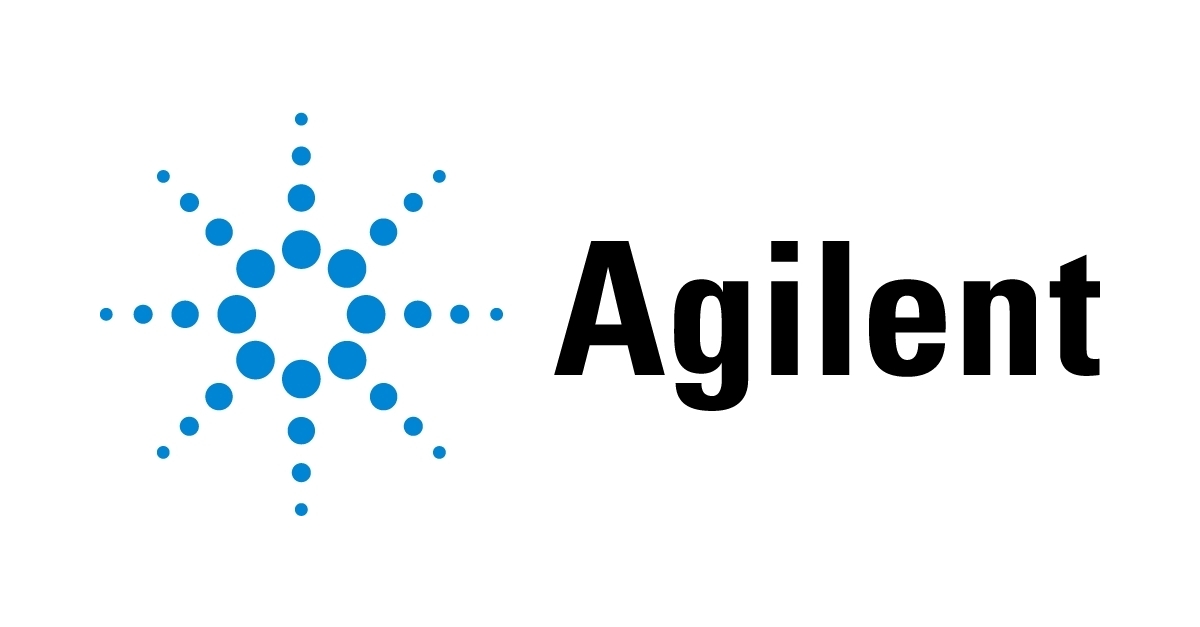Following up from our very successful previous sessions, we are delighted to offer another panel discussion in the ever popular “Ask the Agilent Experts” series.

Format: On-demand
Start times:
Duration: Approximately 80 minutes
Have you ever had a question about your GC/GCMS analysis and thought, “I have no idea what to do,” or that since the question seemed so simple, everyone must already know the answer and "Am I the only one who doesn’t know what to do?” We can assure you that you are not alone.
By watching this presentation you will learn about:
- Best practices with GC and GC/MS systems
- Troubleshooting tips and tricks
- Why different consumables are used for different applications
- The novel HydroInert source, which is designed for GC/MS and GC/MS/MS analysis with hydrogen carrier gas, why it stays cleaner for longer, and what to do if you don’t have access to helium.
If you have a question, we can guarantee that you are not the first...nor the last person to ask the question. Sometimes the simplest of questions can have the most complex answers. A question about which liner to use can lead to a discussion on the benefits of glass wool versus glass frits. A question about how long a column should last may trigger a discussion about the importance of a leak free system, the maximum temperature limit, proper phase selection, and how an application may benefit from using backflush. There’s no such thing as an easy answer because the answer always “depends” on many different factors.
We will discuss some of the most frequently asked questions about GC and GCMS that we have received. Some may seem like simple questions, but they have anything but simple answers.
The Presenters
 Vanessa Abercrombie
Vanessa Abercrombie
MFS, GC Applications Chemist, Agilent Technologies
Vanessa has a broad background in GC and GC/MS, including experience as an instrument chemist at Bode Technology in Virginia working under contract to the FBI’s Laboratory Division. Prior to that, Vanessa worked for ETS Labs in St. Helena, California as an Analytical Chemist where she researched and developed quantitative separations by GC/MS and UHPLC for beer, wine and spirits. She holds a Masters of Forensic Science from The George Washington University and a Bachelor of Arts in Chemistry from Sonoma State University.
 Samuel Haddad
Samuel Haddad
Ph.D., Application Development Chemist, Agilent Technologies
Samuel Haddad is a GC Application Development Chemist at Agilent Technologies in Wilmington, Delaware. Samuel specializes in GC and GCMS applications of trace analysis in environmental and heavy matrix samples. His specialty includes sample preparation techniques to separate analytes from matrix components and extraction from a wide variety of matrix including water, fish, aquatic life, soil, and complex fluids. Samuel holds a Ph.D. in Environmental Science from Baylor University and a B.S in Biology from Southern Illinois University Edwardsville.
Moderator
 Diane Turner
Diane Turner
Director & Senior Consultant, Anthias Consulting Ltd
A Warwick University graduate, Diane completed her masters in Analytical Chemistry and started her career in environmental chemistry, later gaining significant experience as an Applications Chemist. Diane’s area of research through her PhD studies at The Open University was disease diagnosis. She has developed methods and given support and training for companies in most industries around the world for more than 20 years. Diane holds voluntary roles with The Royal Society of Chemistry and other scientific organizations.
Sponsor:





